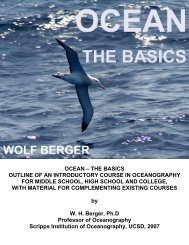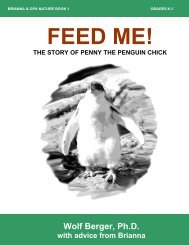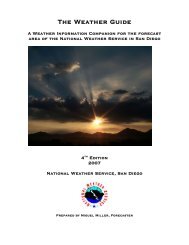Handout - Earthguide
Handout - Earthguide
Handout - Earthguide
You also want an ePaper? Increase the reach of your titles
YUMPU automatically turns print PDFs into web optimized ePapers that Google loves.
TEACHING EARTH AND OCEAN SCIENCES IN THE 21 ST CENTURY CLASSROOM<br />
SCRIPPS INSTITUTION of OCEANOGRAPHY – SDUSD EDUCATIONAL TECHNOLOGY<br />
FALL 2010 WORKSHOP<br />
Center for Ocean Sciences Education Excellence – California<br />
Enhancing Science Education Through Technology Progam<br />
<strong>Earthguide</strong> Online Classroom - Mystery Detectives Activity Series<br />
Focus on 6 th Grade Earthquakes and Plate Tectonics<br />
November 16, 2010 10:30 AM – 12:30 PM, 1:15 PM - 2:15 PM<br />
Scripps Institution of Oceanography<br />
Presenters:<br />
Felicia Ryder, Wangenheim Middle School<br />
Memorie Yasuda, <strong>Earthguide</strong><br />
at Geosciences Research Division, SIO<br />
<strong>Earthguide</strong> is an undergraduate internship program that produces online<br />
educational media in Earth and Ocean Sciences.<br />
Workshop agenda<br />
A. Where to find this document online<br />
Posted to <strong>Earthguide</strong> Online Classroom website<br />
http://earthguide.ucsd.edu/eoc/index.html<br />
• Page 1 of 3<br />
Activities include:<br />
● Plate Tectonic Settings<br />
● Locating Earthquake Epicenters<br />
● Bathymetry & Topography<br />
● Layering in the Earth<br />
Direct link<br />
http://earthguide.ucsd.edu/eoc/special_topics/ms_earthsci/sp_ms_earthsci.html<br />
B. Why earthquakes and plate tectonics? 10 minutes<br />
Living with ongoing hazards in southern California – recognizing the need for hazard<br />
mitigation<br />
Understanding context – that earthquakes are common because of the particular type of plate<br />
tectonic margin that exists nearby<br />
Science Content Standards for California Public Schools - covering standards related to<br />
plate tectonics and locating earthquake epicenters<br />
Ocean literacy – highlighting the importance of plate tectonic processes that originate in the<br />
oceans, and the role of technologies that allow us to explore and observe this new frontier<br />
Special research focus at SIO – communicating the valuable expertise and current research of<br />
scientists at Scripps
C. Discussion – The San Andreas Fault Zone as an Unusual Case 40 minutes<br />
of a Transform Plate Margin<br />
Using interactive visual aids from <strong>Earthguide</strong><br />
Discussion expanding on Dr. Peach’s earlier presentation<br />
● Distinguishing tectonics and plate tectonics<br />
● Distinguishing transform plate margins<br />
● Key oceanic processes that drive plate motion and changes in plate size<br />
1. Seafloor spreading at midocean ridges (a kind of divergent plate margin)<br />
2. Subduction at subduction zones (a kind of convergent plate margin)<br />
● Types of plate margins - situations associated with certain geologic hazards<br />
1. Convergent margins – large mountain ranges, some with Andean volcanoes,<br />
unusually deep earthquakes<br />
Examples - Pacific Northwest at Cascadia Subduction Zone, Sunda Trench, Himalayas<br />
2. Divergent margins – volcanism and shallow earthquakes<br />
Examples – Mid-Atlantic Ridge, East Pacific Rise, East African Rift<br />
3. Transform margins – relatively shallow earthquakes, no Andean volcanism<br />
Examples – many at midocean ridges, unusual case of the San Andreas Fault<br />
4. Not at a plate margin – few earthquakes, rare volcanism<br />
Examples – center of continental U.S., area around Hawaii<br />
● Why we have earthquakes, but no active Andean volcanoes in southern California<br />
D. Classroom activities 120 minutes<br />
1. How seismic waves can be used to locate the origin (epicenter) of earthquakes<br />
Mystery Epicenter<br />
Activities 2 and 3 will be presented as time permits<br />
2. How the passage of earthquake waves can be used to image the interior of the Earth<br />
Mystery Inside the Earth<br />
3. How the reflection of sound waves can be used to estimate distance and thus the shape of<br />
the Earth’s surface, including the shape of the seafloor<br />
Mystery Bathymetry & Mystery Topography<br />
4. Preview<br />
Mystery Alien Landing & Mystery Marine Debris<br />
• Page 2 of 3
E. Online resources related to this presentation 10 minutes<br />
1. This handout<br />
http://earthguide.ucsd.edu/eoc/special_topics/ms_earthsci/materials/handout.pdf<br />
2. Powerpoint slides used in our presentation<br />
Links and other resources used in our presentation<br />
3. http://earthguide.ucsd.edu/eoc/special_topics/ms_earthsci/materials/presentation.ppt<br />
4. Mystery Detectives activity resources<br />
http://earthguide.ucsd.edu/mystery_detectives/teach/<br />
● Mystery Inside the Earth<br />
● Mystery Topography<br />
● Mystery Bathymetry<br />
● Mystery Epicenter<br />
5. Middle School Plate tectonics resources at EOC<br />
http://earthguide.ucsd.edu/eoc/middle_school_t/t_tectonics/t_tectonics.html<br />
6. <strong>Earthguide</strong> Online Classroom (EOC) resources<br />
http://earthguide.ucsd.edu/eoc/<br />
<strong>Earthguide</strong> resources<br />
http://earthguide.ucsd.edu/<br />
7. Felicia Ryder’s Moodle page<br />
Contact Felicia Ryder – fryder@sandi.net<br />
Mike Senise – msenise@sandi.net<br />
8. Questions about the web-based materials<br />
Contact Memorie Yasuda – myasuda@ucsd.edu<br />
• Page 3 of 3


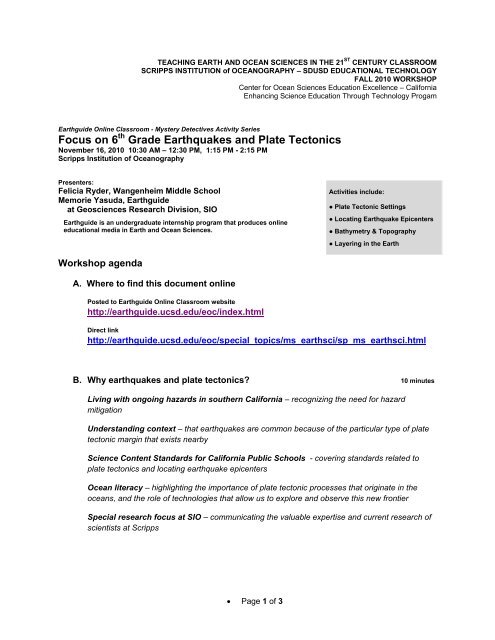
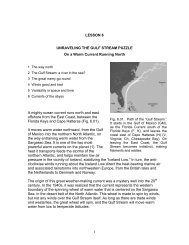

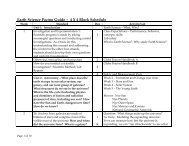
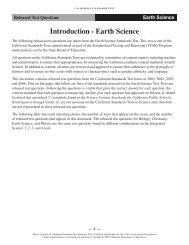
![Density Presentation 1 [.pdf] - Earthguide](https://img.yumpu.com/18214521/1/190x146/density-presentation-1-pdf-earthguide.jpg?quality=85)
